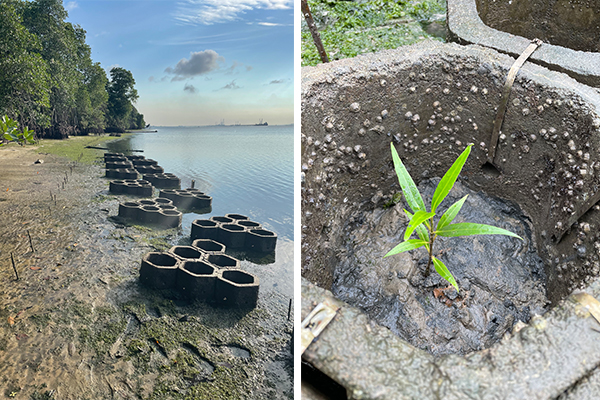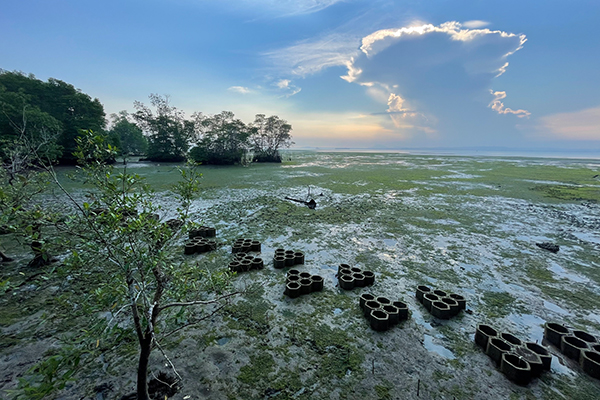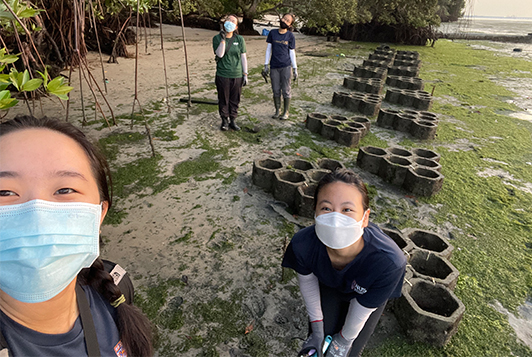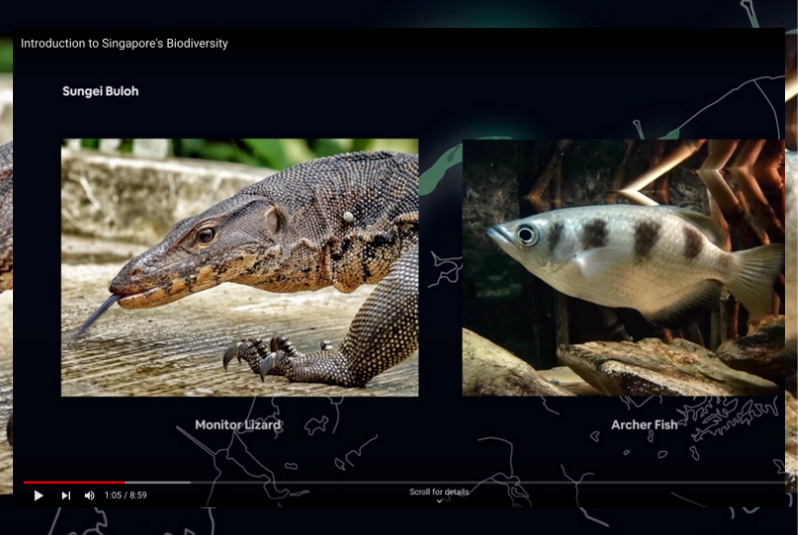Traditional coastal defence structures are expensive and have significant negative impacts on coastal and marine ecosystems and processes. Amanda and her team of four experimented with eco-engineered concrete mangrove planting pods designed by researchers in Australia. These pods aim to aid in mangrove restoration and reduce coastal erosion by decreasing wave energy and stabilising sediments.
NUS Resilience and Growth (R&G) Innovation Challenge winner, Amanda Hsiung explains how nature-based coastal defences using hybrid ecological engineering can help make the world better.

Right: Mangrove seedling growing inside a mangrove planting pod.
OSA: What does the R&G Innovation Challenge mean to you?
Amanda Hsiung (AH): The R&G grant provided my team with the opportunity to test out ideas that are experimented overseas. I was unable to travel to Melbourne to start on my PhD due to COVID-19 but through the grant’s financial support, I could start on this project here in Singapore with Rania and Hannah’s help. Through this project, we were able to collaborate with established scientists, designers and engineers from Australia and Singapore.
OSA: How does this project impact the world?
AH: This project is one of the few in Singapore to apply hybrid ecological engineering techniques for mangrove restoration. We found that by planting mangroves in concrete planting pods, we were able to alleviate some problems with mangrove seedling establishment and growth in Pulau Ubin such as wave action and erosion. However, there are still many other problems (e.g. smothering by algae) that contribute to the difficulties of growing mangroves at unsuitable sites. Hopefully with further testing, we can find a way for them to grow successfully and apply this at other sites with similar problems to increase coastal protection.
OSA: What was your greatest learning?
AH: We learnt that it's important to rigorously test an idea before implementing it on a larger scale. Properly weighing the costs and benefits can prevent unnecessary wastage of resources.
OSA: What advice would you offer to students?
Although nature-based solutions sound simple and straight-forward, extensive research and effort is required for them to be successful. My advice would be to stay goal-oriented but also flexible and open to new ideas and solutions. Have fun during the process because you can learn and grow so much more from mistakes and failures.

In conclusion, the project is still in progress and Amanda and her team are happy that they got to kickstart it here in Singapore. Only time will tell whether these structures will be able to successfully restore mangrove. By applying this method in Singapore and overseas at appropriate sites, they hope that it will be a potential alternative to seawalls.
For more fascinating and inspiration winning projects supported by the NUS R&G Innovation Challenge, visit here.
Share:
Contributors
Amanda Hsiung, alumna, Faculty of Science
Rania Hartanto, alumna, Faculty of Science
Hannah Yeo, alumna, Faculty of Science





